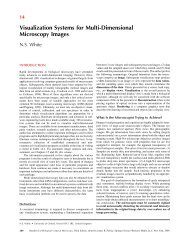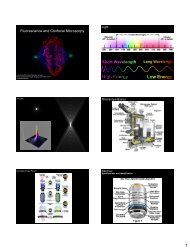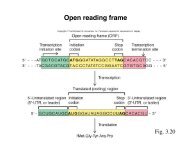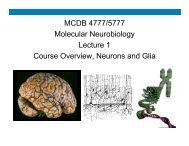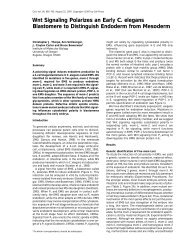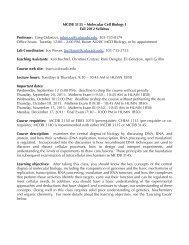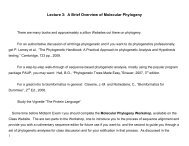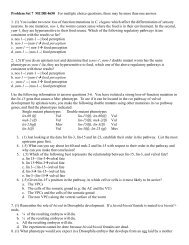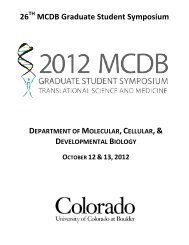Lecture 2: Describing Microbial Diversity: the ... - MCD Biology
Lecture 2: Describing Microbial Diversity: the ... - MCD Biology
Lecture 2: Describing Microbial Diversity: the ... - MCD Biology
You also want an ePaper? Increase the reach of your titles
YUMPU automatically turns print PDFs into web optimized ePapers that Google loves.
2<br />
Thus, organisms in same “genus” (a collection of “species”) would have similar properties in a fundamental<br />
sense; <strong>the</strong> representatives of a “species” are expected to share most properties with o<strong>the</strong>r representatives of<br />
that species, perhaps with specialized gimmicks (“subspecies”, serovars, etc.).<br />
1. A relatedness group at any level is a “clade”, a natural (phylogenetic) grouping. Representatives of a<br />
clade are more closely related to one ano<strong>the</strong>r than to any “outgroup” (non-clade) organism. “Phylotype” would<br />
refer to <strong>the</strong> collection of organisms that make-up <strong>the</strong> clade, <strong>the</strong> phylogenetic type.<br />
2. The question of what is a microbial “species” has recently become really complex with <strong>the</strong> revelation of<br />
<strong>the</strong> concept of “pangenome” (text, p. 651-2). More later on this important topic, one issue in <strong>the</strong> description of<br />
“microbial diversity”.<br />
B. A natural taxonomy of macrobes has long been possible:<br />
Large organisms have many easily distinguished features, e.g. morphology, body-plans and developmental<br />
processes, that can be used to describe hierarchies of relatedness.<br />
C. Microbes usually have few distinguishing properties that relate <strong>the</strong>m, so a hierarchical taxonomy mainly was<br />
not possible until molecular comparisons (not only sequence) came along.<br />
2. Recent advances in molecular phylogeny have changed <strong>the</strong> picture a lot: we now have a relatively non-<br />
subjective, semi-quantitative way to view “biodiversity”, in <strong>the</strong> context of phylogenetic “maps” - evolutionary trees.




